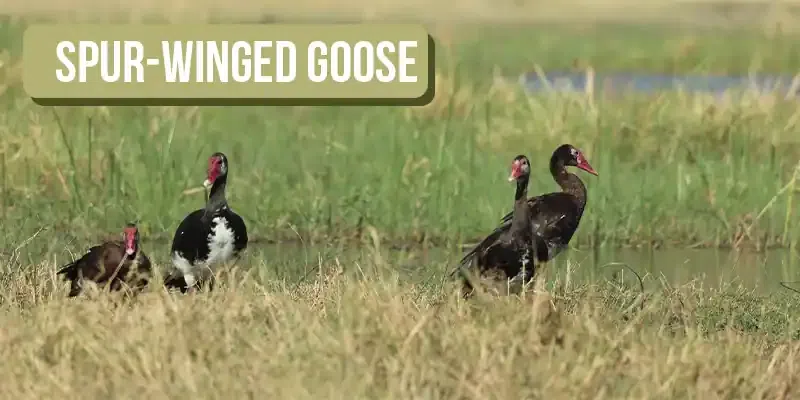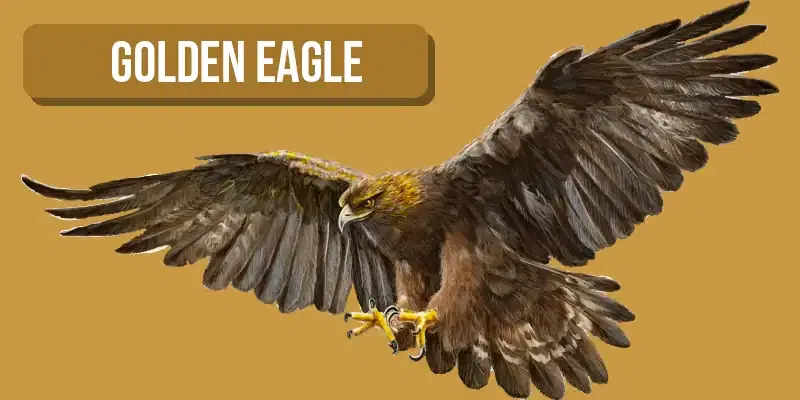Top 10 Fastest Animals in The World (Land, Air, & Water)
Last Updated :
08 Feb, 2024
Fastest Animals on Earth: Humans are one of the most intelligent creatures on the planet, and over time, they have evolved significantly and become more efficient. However, despite the fact that humans are more productive, they are not as quick as animals. There are thousands of creatures on this planet that are faster than humans. A human can run a maximum of 27.5 miles per hour; however, some animals can run twice as fast as humans.

Top 10 Fastest Animals in the World
Here is the list of the top 10 fastest animals in the world: land, air, and water:
10. Brown Hare

Brown Hare
- Common Name: Brown Hare
- Scientific Name: Lepus europaeus
- Class: Mammalia
- Order: Lagomorpha
- Family: Leporidae
- Habitat: Open fields, grasslands, and woodlands
- Speed: Up to 45 mph (72 km/h)
- Diet: Grasses, herbs, and cereal crops
- Distinctive Features: Long, black-tipped ears, powerful hind legs, reddish-brown fur with black-tipped tail
- Conservation Status: Least Concern (Population Declining)
The brown hare or also known as the European hare due to its presence in most parts of Europe and Asia is one of the fastest herbivorous animals on the earth. Despite its small size, it can easily hit a speed of 48 miles per hour. An adult brown hare can be a maximum of 75 cm long and weighs around 2.4-3 kg. The majority of this species is found in Europe, Central Asia, and some parts of Siberia.
9. Blue Wildebeest

Blue Wildebeest
- Common Name: Blue Wildebeest
- Scientific Name: Connochaetes taurinus
- Class: Mammalia
- Order: Artiodactyla
- Family: Bovidae
- Habitat: Open grasslands, savannas, and plains
- Speed: Up to 50 mph (80 km/h)
- Diet: Grasses, herbs, and leaves
- Distinctive Features: Broad, muscular build, horns in both males and females, silvery-blue fur with black stripes on the legs, beard, and mane
- Conservation Status: Least Concern (Population Stable)
This blue wildebeest is a wide-shouldered antelope belonging to the family of Bovidae. It is the second fastest antelope on the earth and can run at a maximum speed of 50 miles per hour. An adult male blue wildebeest can be 170-240 cm in head-to-body length and can weigh around 165- 290 kg. The majority of blue wildebeest is found in Tanzania, Kenya, Zambia, South Africa, and Zimbabwe.
8. Marlin

Marlin
- Common Name: Marlin
- Scientific Name: Makaira spp.
- Class: Actinopterygii
- Order: Beloniformes
- Family: Istiophoridae
- Habitat: Open oceans, tropical and subtropical waters
- Speed: Up to 50 mph (80 km/h)
- Diet: Fish, squid, and crustaceans
- Distinctive Features: Long, slender body, sharp, pointed bill, sail-like dorsal fin, iridescent blue-green coloration
- Conservation Status: Varies depending on the species (some are Least Concern, others are Vulnerable)
Marlins are considered to be the second-fastest marine swimmers that can swim at a speed of 50 miles per hour. The unique elongated body shape and long spear-like bill differentiate it from other fishes of the Istiophoridae family. An adult marlin can be as long as 5 meters and around 800 kg in weight. The marlin fish is mainly found in the Atlantic, Indian, and Pacific oceans.
7. Pronghorn Antelope

Pronghorn Antelope
- Common Name: Pronghorn Antelope
- Scientific Name: Antilocapra americana
- Class: Mammalia
- Order: Artiodactyla
- Family: Antilocapridae
- Habitat: Open grasslands, prairies, and deserts
- Speed: Up to 60 mph (98 km/h)
- Diet: Grasses, herbs, and shrubs
- Distinctive Features: Forked horns (males only), white patches on the face, throat, rump, and sides, reddish-brown fur with black-tipped tail
- Conservation Status: Least Concern (Population Stable)
A pronghorn looks very similar to a deer and as the name suggests, it has two large horns. The Pronghorn antelope is a native North-American species, and also the second fastest land animal on this planet. An adult Pronghorn can be 1.3-1.5 meters long, weigh around 40-65 kg, and can reach a top speed of 60 miles per hour in seconds. The large windpipe and big lungs of Pronghorn, help it control its breathing even at such high speeds.
6. Sailfish

Sailfish
- Common Name: Sailfish
- Scientific Name: Istiophorus spp.
- Class: Actinopterygii
- Order: Beloniformes
- Family: Istiophoridae
- Habitat: Warm and temperate oceans worldwide
- Speed: Up to 68 mph (110 km/h)
- Diet: Fish, squid, and crustaceans
- Distinctive Features: Elongated body, long, pointed bill, sail-like dorsal fin, iridescent blue-green coloration
- Conservation Status: Varies depending on the species (some are Least Concern, others are Vulnerable)
The selfish is one of the two species of salt-water fishes, belonging to the family of the Istiophoridae, blue or grey in color. It is one of the fastest aquatic creatures on the earth, that can go up to a top speed of 68 miles per hour. An adult sailfish can be 1.2-1.5 meters long and can easily weigh around 100 pounds. Tropical regions such as the Indian Ocean and the temperate waters of the Pacific are the main habitat for this fish.
5. Cheetah

Cheetah
- Common Name: Cheetah
- Scientific Name: Acinonyx jubatus
- Class: Mammalia
- Order: Carnivora
- Family: Felidae
- Habitat: Open grasslands, savannas, and woodlands
- Speed: Up to 75 mph (120 km/h)
- Diet: Small to medium-sized mammals, such as gazelles, impalas, and springboks
- Distinctive Features: Slender, lightweight body, long, flexible spine, semi-retractable claws, black tear-like facial streaks, and spotted coat
- Conservation Status: Vulnerable (Population Declining)
This wild cat native to Africa is the faster land animal on earth, that can easily reach up to a speed of 50-80 miles per hour. The highest speed ever recorded by a cheetah is 58-61 miles per hour. The unique body shape of the cheetah, including its thin land long legs, flexible spine, lightweight, and long tail, helps it attain such speeds. Cheetah is recognized as a vulnerable species on the IUCN Red List, and some surveys suggest that there are less than 8000 cheetahs alive to date.
4. Spur-Winged Goose

Spur-Winged Goose
- Common Name: Spur-winged Goose
- Scientific Name: Plectropterus gambensis
- Class: Aves
- Order: Anseriformes
- Family: Anatidae
- Habitat: Open savannas, grasslands, and wetlands of sub-Saharan Africa
- Speed: Up to 88 mph (142 km/h)
- Diet: Grasses, herbs, and aquatic plants
- Distinctive Features: Large size, black plumage with white face and wing markings, bony spur on the wing bend
- Conservation Status: Least Concern (Populations generally stable)
Spur-winged goose is one of the largest birds in the family of Anatidae, it’s pretty similar to geese, and shelducks but has many identical characteristics as well. The Spur-winged goose is mainly found in the wetlands of Sub-Saharan Africa. An adult Spur-winged goose can weigh around 4-7 kg and 75-110 cm long, with a wingspan of 150-200 cm. Under normal atmospheric conditions, it can accelerate up to a speed of 88 miles per hour.
3. Frigate Bird

Frigate Bird
- Common Name: Frigatebird
- Scientific Name: Fregata spp. (Fregata minor, Fregata ariel, Fregata magnificens)
- Class: Aves
- Order: Pelecaniformes
- Family: Fregatidae
- Habitat: Tropical and subtropical oceans worldwide
- Speed: Up to 153 km/h (95 mph) in powered flight, and faster in glides
- Diet: Fish, squid, and occasionally other seabirds’ prey
- Distinctive Features: Large, black body with red, inflatable throat pouch (males only), long, forked tail, powerful wings, and skillful gliding ability
- Conservation Status: Least Concern (Populations generally stable)
Frigate birds are one of the fastest among the family of seabirds, mainly found in tropical and subtropical regions. Due to their extraordinary body shape, they are very easily noticeable the female frigate birds have underbellies while the male one has a red gular pouch. The wings of this bird are very large and can span up to 2.3 meters, providing it with more lift and helping it attain a speed of 95 miles per hour.
2. Golden Eagle

Golden Eagle
- Common Name: Golden Eagle
- Scientific Name: Aquila chrysaetos
- Class: Aves
- Order: Accipitriformes
- Family: Accipitridae
- Habitat: Open mountains, forests, and grasslands worldwide
- Speed: Up to 120 mph (193 km/h) in dives
- Diet: Small to medium-sized mammals, birds, reptiles, and fish
- Distinctive Features: Large size, golden-brown plumage, powerful wings, and sharp talons
- Conservation Status: Least Concern (Populations generally stable)
The golden eagle belongs to the family of Accipitridae, just like other species of eagle, but this eagle from the other hemisphere is the fastest among them all and also the second fastest bird in the world. It’s one of the best birds of prey, that can fly at a maximum speed of 199 miles per hour. Even though the habitat of this bird is widespread it is mainly found in the North American and the North-African region.
1. Peregrine Falcon

Peregrine Falcon
- Common Name: Peregrine Falcon
- Scientific Name: Falco peregrinus
- Class: Aves
- Order: Falconiformes
- Family: Falconidae
- Habitat: Open areas worldwide, including mountains, coasts, and cities
- Speed: Up to 242 mph (390 km/h) in dives
- Diet: Medium-sized birds
- Distinctive Features: Sleek, powerful body, blue-gray feathers with black markings, and sharp talons
- Conservation Status: Least Concern (Populations generally stable)
The peregrine falcon or commonly referred to as the peregrine or duck hawk in the North-American region is the fastest bird on the earth and also the fastest in the entire animal kingdom. This large crow-sized bird of prey belongs to the family of falcons and can fly at a speed of 200 miles per hour. The peregrine falcon is found in almost all continents except Antarctica, but mainly it’s found in Australia. Some researchers also show that a full-sized Peregrine falcon can even accelerate up to 242 miles per hour.
The peregrine falcon is a true marvel of the animal kingdom, combining unparalleled speed, agility, and hunting prowess with a remarkable adaptability to diverse environments. Their presence in the world’s landscapes serves as a reminder of the awe-inspiring power and resilience of nature. By understanding and protecting these remarkable creatures, we can ensure their continued reign as the masters of the skies.
Top 10 Fastest Animals in the World (Land, Air, & Water)
| 1 |
Peregrine Falcon |
245 mph |
Falco peregrinus |
Bird |
Fastest animal in the world |
| 2 |
Golden Eagle |
200 mph |
Aquila chrysaetos |
Bird |
Fastest bird of prey |
| 3 |
Frigate Bird |
90 mph |
Fregatidae |
Bird |
Fastest flying bird in level flight |
| 4 |
Spur-Winged Goose |
75 mph |
Plectropterus gambensis |
Bird |
Fastest flying bird in the world |
| 5 |
Cheetah |
70 mph |
Acinonyx jubatus |
Mammal |
Fastest land mammal in the world |
| 6 |
Sailfish |
68 mph |
Istiophorus platypterus |
Fish |
Second fastest fish in the world |
| 7 |
Pronghorn Antelope |
60 mph |
Antilocapra americana |
Mammal |
Fastest land mammal in North America |
| 8 |
Marlin |
50 mph |
Istiophoridae |
Fish |
Fastest fish in the world |
| 9 |
Blue Wildebeest |
50 mph |
Connochaetes taurinus |
Mammal |
Fastest land mammal in Africa |
| 10 |
Brown Hare |
45 mph |
Lepus europaeus |
Mammal |
Fastest land mammal in Europe |
Conclusion
There are many faster runners on this planet and all of them have a unique body design that helps them attain such speeds and control breathing. But the sad part is that most of these mammals are either vulnerable or extinct. The best body-to-weight ratio in animals helps them run at a fast pace. Also, many animals have evolved a lot and become even faster. We hope this article has sparked your curiosity and interest in learning more about these amazing animals and their abilities.
Also Check:
Fastest Animals on Earth – FAQs
Q1. Which is the fastest land animal on the earth?
Cheetah is considered to be the fastest land mammal.
Q2. Can a horse beat a Pronghorn in terms of Speed?
Yes, some special breeds of horses such as a quarter horse, can run up to a speed of 55 miles per hour and can beat a pronghorn.
Q3. What is the top speed of a Cheetah?
A cheetah can go as fast as 130 Km/Hr.
Q4. What’s the top speed of the Fastest Animal on the earth?
The Peregrine falcon is the fastest animal on the earth that can go up to a speed of 240 miles per hour.
Q5. Are there any other notable fast animals not in the top 10 list?
Yes, there are many other fast animals that didn’t make the top 10 list. For example, the Black Marlin, Mexican free-tailed bat, and European hare are also known for their remarkable speed.
Q6. Can humans train to be as fast as these animals?
While humans can improve their speed and athleticism through training, it’s unlikely that we will ever match the speeds of these animals due to our physiological limitations.
Q7. Do environmental factors affect the speed of these animals?
Environmental factors, such as wind conditions and terrain, can influence the speed of these animals. For instance, peregrine falcons achieve their fastest speeds during high-speed dives, which can be influenced by wind patterns.astest
Share your thoughts in the comments
Please Login to comment...